Running in London
I hoofed more than 100 miles in a week as my way of standing still in a city that never stops moving
Jet lag made the morning air feel as dense as water, but I’d been up since 3 a.m., so I might as well go for a run. I stepped out of the Victorian pub converted to an Airbnb and onto Austral Street, empty at dawn save for the cars and garbage cans. This is the way I prefer to experience cities — empty of people — though I realize that makes no sense. My anxious brain needs quiet paths and tranquil green spaces, but my heart wants to know all of the stories.
Cities collect an abundance of stories, and I was determined to keep my focus there. Stories are the way I keep my anxious brain from collapsing in confusion — threads to weave into a coherent narrative of the chaotic world. As I padded down the sidewalk, I pretended I was 22 from the Pixar film “Soul,” newly transported into an awkward meat sack and experiencing life for the first time. In our striving, we’re told to live each day as though it’s our last. But it feels more meaningful to live each day as though it’s our first. Approach every experience with no expectations. Find joy in the mundane. Appreciate just being alive.
Lacking people to watch, I focused on my senses. Morning sunlight glistened off the glass of towering skyscrapers. Distant traffic hummed. The air tasted of wisteria blossoms and something vaguely bitter. A warm wind brushed my face, heralding the day’s coming heat. My legs felt rubbery, but the effort was refreshingly undemanding in this port city saturated in sea-level oxygen.
The quiet flow of Kennington Lane spat me out into the chaos of Vauxhall, a section of central London that was effervescent with morning commuters. I wandered in bewildered loops through bodies flowing in every direction beside a tangle of roundabouts, pedestrian bridges, train tracks, and bike paths. Double-decker buses towered over the narrow streets, showing no mercy for Americans who don’t know which way to look before crossing. My focus and thus my anxiety were in shreds by the time I found my way to the riverside path, where I tried to lead myself back to stories.
The woman in a tailored blue suit and an enormous Great Pyrenees on a pink leash — what’s her story?
The 80-something English gentleman strolling the pedestrian path in a bowler hat with a wooden cane — what’s his?
The muscled young black man with a strangely stiff gate, jogging at my pace about 20 yards ahead — injured athlete?
And what about the hundreds of less memorable faces I passed along a seven-mile route through a sunbeam-showered Battersea Park, over the Albert Bridge — charming despite a disquieting “Weak Bridge” warning sign — and back along the River Thames. Everybody has a story, which is amazing and overwhelming when I try to think about it. All of these millions of little souls, striving toward the unknown future, struggling to stay alive, searching for the sparks that make life worth living, day after day after day.
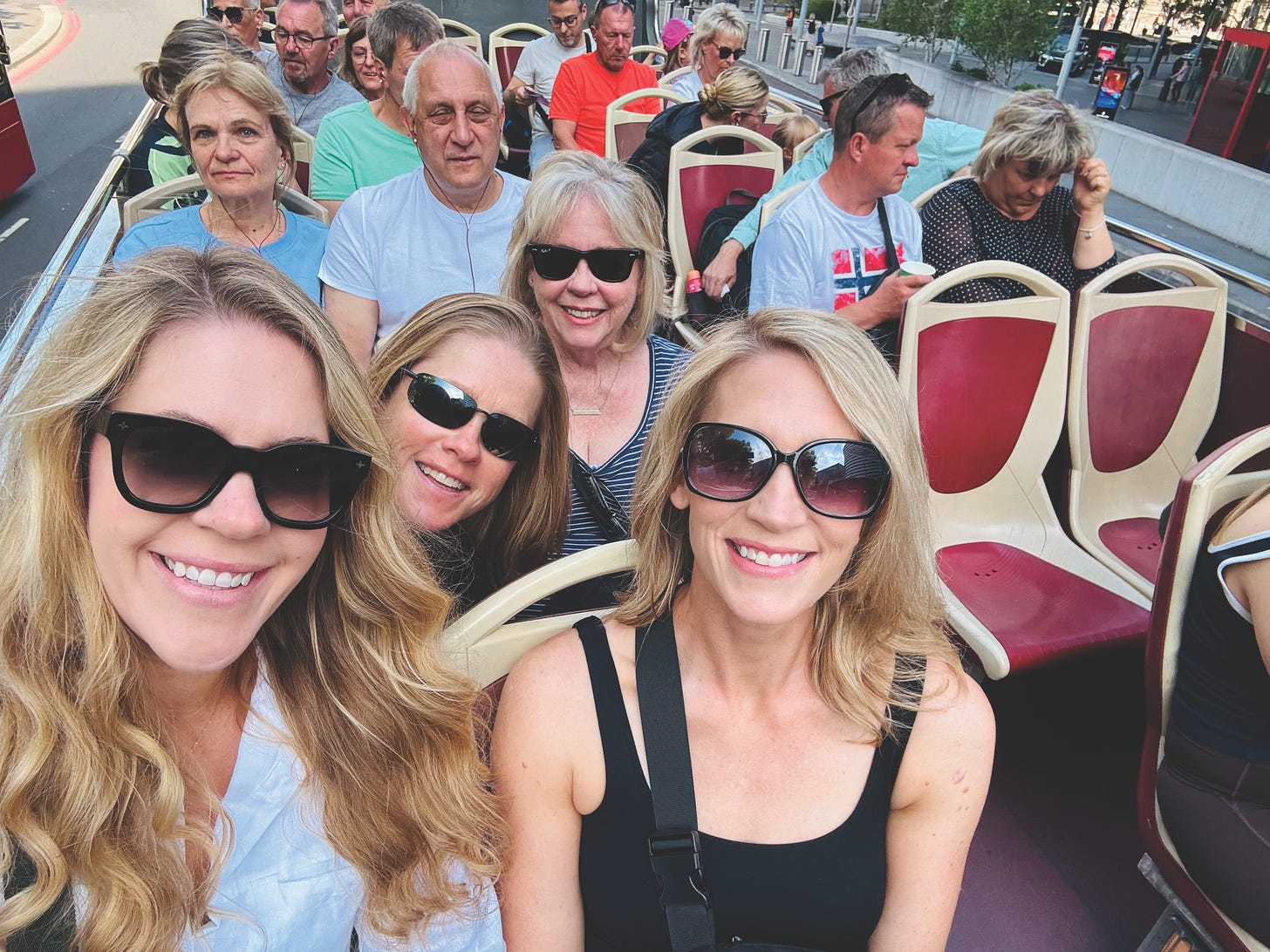
My mom’s dream is to travel with her daughters and grandchildren as much as possible, and she made this trip to London happen. My sisters and I had never visited England, although I’ve spent many hours languishing through long layovers at Heathrow airport. Our wish list for a single week in the city was miles long. The four of us have marked differences in our wants and needs, but we’re all cursed with the relentless Homer family drive to carpe diem.
When contributing to the wish list, I borrowed a long list of exclusive local recommendations from my friend Rob, rather than do a modicum of my own research. When approaching a new experience, I prefer to go in with my heart and mind as open as possible. This approach is most effectively achieved through ignorance. Although I’ve watched dozens of films that featured London and read about historic events like … well, most recently, the 1974 Houses of Parliament bombing carried out by the IRA … I held precious little knowledge about the city itself. I even asked what river we were crossing as we walked toward Big Ben mere hours after arriving at Heathrow on a red-eye flight. I genuinely didn’t know.
“The Thames,” my sister Lisa replied without a hint of judgment. I love her.
Day one, starting in the afternoon and operating on zero sleep, we walked through Lower Marsh and Westminster, skirted through St. James Park, and rode the London Eye. We wandered for more than five miles, staying on he move until after the 8:22 p.m. sunset. I was dazed as we shuffled back to our apartment. The crush of sensory overload — the people, the traffic, the lights and sirens and chaos — had flattened my mind. How do humans survive in cities, day after day after day? How do they avoid collapsing under the weight of each other?
It was clear that my brain’s desire for a relaxing family trip — lingering in conversation over coffee and breakfast, spending each afternoon at maybe one museum or historic site, and taking evening strolls through the park — was far from the hard-driving style of my sisters and mom. They were determined to see all of the things in seven days, even if that was impossible. My heart was intrigued by all of the potential new discoveries, but I was going to need a lot of self-management to hang on.
It was clear I was going to have to do a lot of running in the few daylight hours that remained.
For the first few days, jet lag aided in my mission to carve out alone time, although removing sleep from my routine was not great for self-care. Still, I loved the early mornings before the extent of the city’s chaos emerged. It was refreshing to be out before the harried commuters, jogging through mostly empty green spaces with occasional friendly greetings from fellow runners.
Finding routes to run when I knew nothing about the city was fun. I’d pick a direction — west on the first morning, northwest on the second, east on the third — and take five minutes to draw a route of appropriate length using Strava heat maps. The loops weren’t well thought out, but I had to follow them exactly lest I become hopelessly lost. Thus, the discoveries were endless. I ran past an abandoned Buckingham Palace, under the Wellington Arch, past the old football pitches of Hyde Park, through the Italian Gardens, along the Serpentine, and back across Westminster Bridge. And that was just on the second day. I returned from my run refreshed and ready for the 10 miles of busy sightseeing around London Bridge and the larger skyscrapers of the city.
At least … I thought I was ready. My sisters told me to meet them at the Borough Market, which proved to be … a lot. Shoulder-to-shoulder humans clamoring for street food. I got shoved around as I muscled through the throngs. People were shouting and juggling messy platters of food. A little girl smeared ice cream on my arm. I climbed through crowds sitting on stairs to a high point in an effort to spot my family. In the disarray, I lost my appetite. But I managed to find my sisters and shove down the same item they were ordering, which I think was a crumble. I’ve forgotten. My mind was lost in the noise. It sucks to lose my senses amid sensory overload, but this is what happens.
We crossed the “Millennial Bridge” to Saint Paul’s Cathedral. I felt relieved. I like churches. They can be crowded, but rarely host wall-to-wall humans, and they’re always peaceful. The architecture is incredible. The interior art is beautiful, and I especially love the mother and child motifs. People keep their voices down. They burn candles that represent hundreds of prayers flickering with hope. I love this.
But Saint Paul’s Cathedral also features many flights of stairs that visitors are allowed to climb, so of course we were going to climb them. If I had heeded the online warnings for visitors with concerns about heights or confined spaces, I might have shown more discretion. Instead, I charged ahead, leading the way up the winding corridor of 528 steps to the Golden Gallery. The tiny balcony towered 300 feet over London with panoramic views and a yawning void. And because visitors are allowed to climb at will, the balcony was clogged with bodies. There was hardly room to breathe, let alone move.
My vision began to flutter. I tried to force deep breathing and ground my body in the present. I told myself there was no chance of falling, that no one would push me. But anxiety operates free from logic, and panic attacks aren’t optional. My breaths became short and stilted. At that point, I only had two options — hyperventilation, tears, and collapsing into a puddle for the rest of the day, or escaping at all costs. I flattened myself against the stone wall and shoved through the congestion until I reached the stairwell, gasping that I was “going to lose it” if I wasn’t allowed to cut through the line. It wouldn’t be the last time this week that I had to shed all dignity and decorum to appease my stupid brain.
Luckily, I staved off the panic attack and made it through to the evening and into another much-needed early morning. I spent that run largely lost along the Southwark riverfront, locked away from pedestrian paths and parks because it was before 7 a.m. Instead, I cut through narrow alleys and somewhat sketchy industrial corridors. The streets were empty, and I felt at peace even though this uninformed meandering was objectively more dangerous than standing on the upper balcony of Saint Paul’s Cathedral.
That was an eight-mile run followed by nearly 16 miles of hardcore touristing. After my near panic attack the previous day, I became irrationally terrified of the subway. Being trapped underground with throngs of humans was a sure path to another attack, so I decided I would just walk everywhere I needed to be. My sisters and mom were sympathetic. Notting Hill was more than five miles away through a Hyde Park that was much more crowded in the late morning. I had to weave through groups just to keep a brisk walking pace.
The Portabello Market was … a lot. Shoulder-to-shoulder humans clamoring for trinkets. Everyone was shoving through the crowds and stopping mid-stride without a hint of warning. I became a salmon swimming upstream as I looked for my family, and again found them at the worst time for my psyche. I was ready to sit down in the middle of the crowded street and throw a toddler tantrum. I think they were ready to never invite me on another one of these trips again.
I was able to calm down while we waited in a long line for a TikTok-popular restaurant called EggBreak. Across the street was a tiny coffee shop that only sold coffee, but it did have a small refrigerator full of light blue liquid called “Blue Juice.” This was sure to have some sugar, which I badly needed to stave off the toddler tantrums. My sisters laughed at me as I sipped the product I’d purchased and made a sour face. “Blue Juice” was a kind of lemonade, which I hadn’t realized. It was tasty, but there was no indicator that it was a sour citrus drink … well, except for the label, which I hadn’t read.
After a late brunch (I had the avocado toast. It was delicious), we had to book it in time to make it to last call for Westminster Abbey. Google said the crowded subway commute would take 45 minutes. I was certain I could cover the three miles of distance on foot in that time if I jogged, and was determined to try. But the large meal and the weird jet lag schedule all caught up with me at once as I ran through Hyde Park, where public bathrooms are scarce (they’re scarce everywhere in London). It was a dicey proposition to find the one toilet at the only restaurant in the area, and wait in a 10-minute line to use it. I was ready to duck into a bush and squat, because the city has a way of stripping away decorum when it demands we deny our human needs.
I missed the Westminster Abbey deadline and wandered around for 90 minutes while waiting for my family to tour the church. I again spent most of this time looking for a bathroom, which I again needed after rehydrating following my jog of desperation, and which I again didn’t find. I had to clench a little through the Evensong service, which was lovely, but I was admittedly distracted. I was again threatening to drop my pants and squat on the street after finding the bathrooms in the sprawling Westminster subway station locked and closed. I exited the underground station through three unfamiliar entrances before deciding to find my way back to my family on the surface at least 20 minutes later with my bladder still full. This really wasn’t my day.
May 4 featured an all-day group bus tour of the English countryside. We visited the villages of Bath and Lacock, which are popular for their historic buildings and unspoiled appearance. I enjoyed touring the Roman baths and walking the streets beside the cute cottages, but I don’t necessarily love being herded around on a tight schedule. I told my family that next time we need to return on bicycles for a proper tour, but I don’t think I convinced them that unstructured human-powered travel is the way to go.
The day ended with an all-time experience, though. The bus tour featured private access to the Stonehenge site at sunset, and we were allowed to walk around inside the prehistoric monument. It was disquieting to stand beneath these towering blocks, dragged on sledges across 150 miles of wooden hills more than 5,000 years ago, erected in a then-rare open field for unknown reasons, and added to by scores of generations spread across more than a millennium. Not knowing what it all means is what makes Stonehenge feel so meaningful. Humans have always been strivers, laboring through the chaos and looking toward the sky to make sense of it all. These ancient humans left a story for the long haul when they built Stonehenge. Even though we don’t understand their language, we can feel their presence still. They were here. Now we are here. Civilizations rise and collapse, but the human story goes on.
The brief hit of quiet time with the giants of history was irresistible. I took the entire next morning off from the sisters’ shopping plans and ran 10 miles to Greenwich Village, this time leaving late enough in the morning to take the nice way along the Thames Path. Rejuvenated, I was ready for a fast walk in a drizzling rain to the National Gallery (full of impressionist paintings, which I loved), and watching a performance of Hamilton, which was Sara’s contribution to the list. Early on, I was a skeptic — theaters mean more crowds, I’m typically not a musical enthusiast, and a play about rejecting British colonialism to form a democratic government that even Americans no longer seem to support seemed like an awkward narrative during this volatile era. But Hamilton was great. I loved it. And I even recruited Sara to walk home with me in the late evening so we could burn off the adrenaline and rave about the performances we loved.
Our last day in London came with a hefty dose of exhaustion. We’d strived to experience all of the things and managed a lot of them. I’d coped with my social anxiety and claustrophobia with running, which is relaxing but not exactly restful. Mom and the sisters walked tens of thousands of steps and stayed out late nearly every night. We still squeezed in a few last things. I found short stretches of singletrack to run in Burgess Park. We visited the British Museum. We finally ate at a proper Indian restaurant and consumed our seventh or eighth rose-shaped gelato.
And then it was time to go. As we walked toward our apartment in Elephant and Castle one last time, I tried to absorb as much as I could. The faces as they passed. The detritus in the street. The Tankard Tavern that opened in 1825 but seemed closed every night we walked by. The Sista Barista and London Bicycle Tour Company. I passed the Geraldine Mary Harmsworth Park every day, and yet I never even bothered to venture inside on my way to bigger, farther-away places. What would it be like to spend a whole week just in this neighborhood? I could spend a lifetime here and barely scratch the surface of all of the stories. We’re so busy trying to carpe diem that we miss most of it. We strive to see the big picture, but the picture just keeps getting bigger.
Perhaps there will be a next time. I intend to come better prepared, with clearer intentions and perhaps a Xanax prescription. In the meantime, I’m grateful to my mother for working so hard to keep our family close and for loving us for who we are, even with our (my) markedly different personality types and weird ticks. I hope we can do it again. Maybe a freezing cold trip to a remote village in Iceland can be next? No? We’ll figure out the path. We always do.

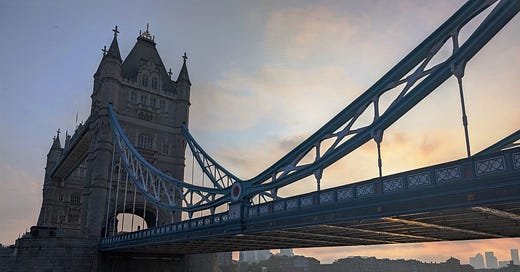




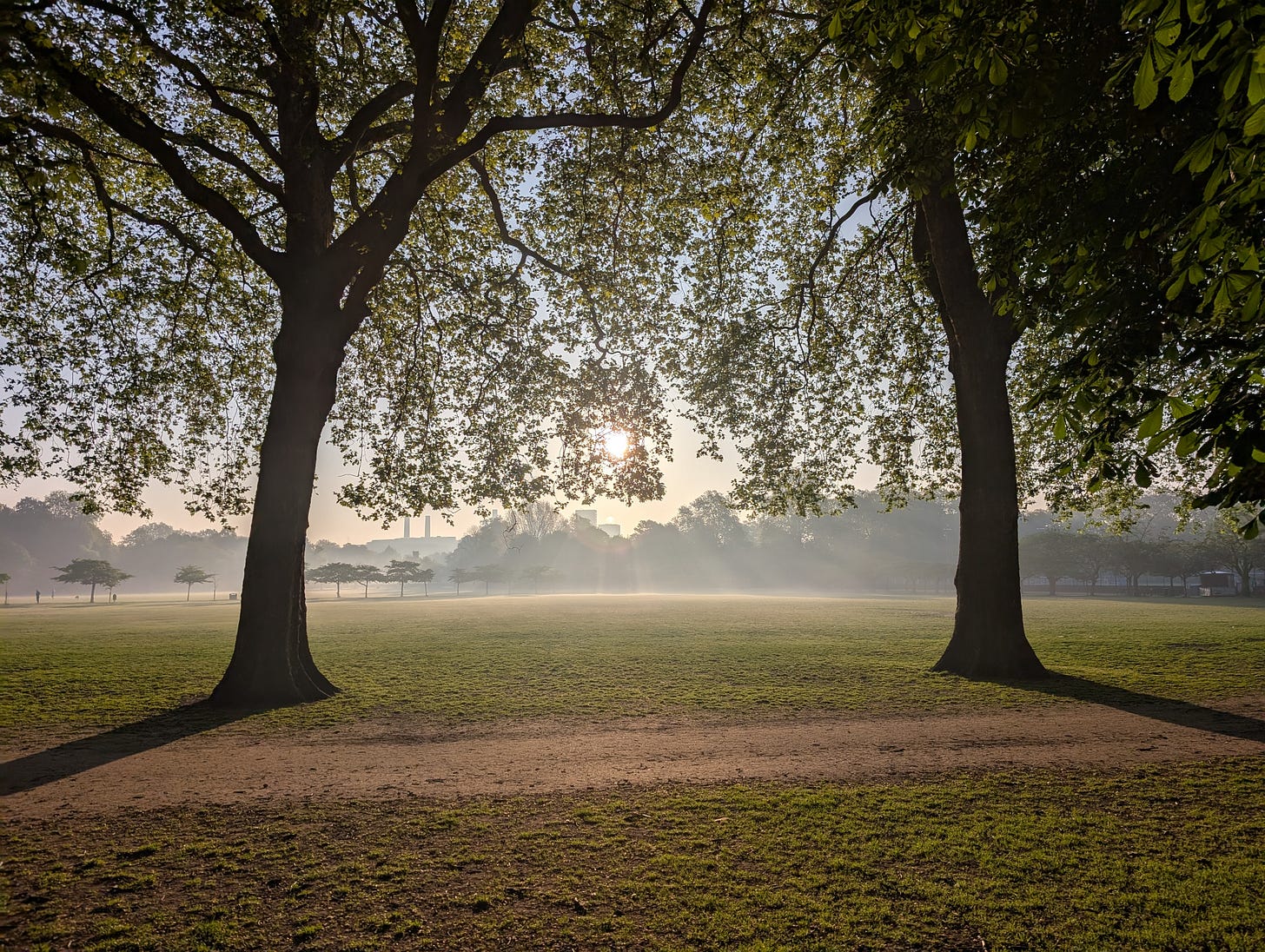
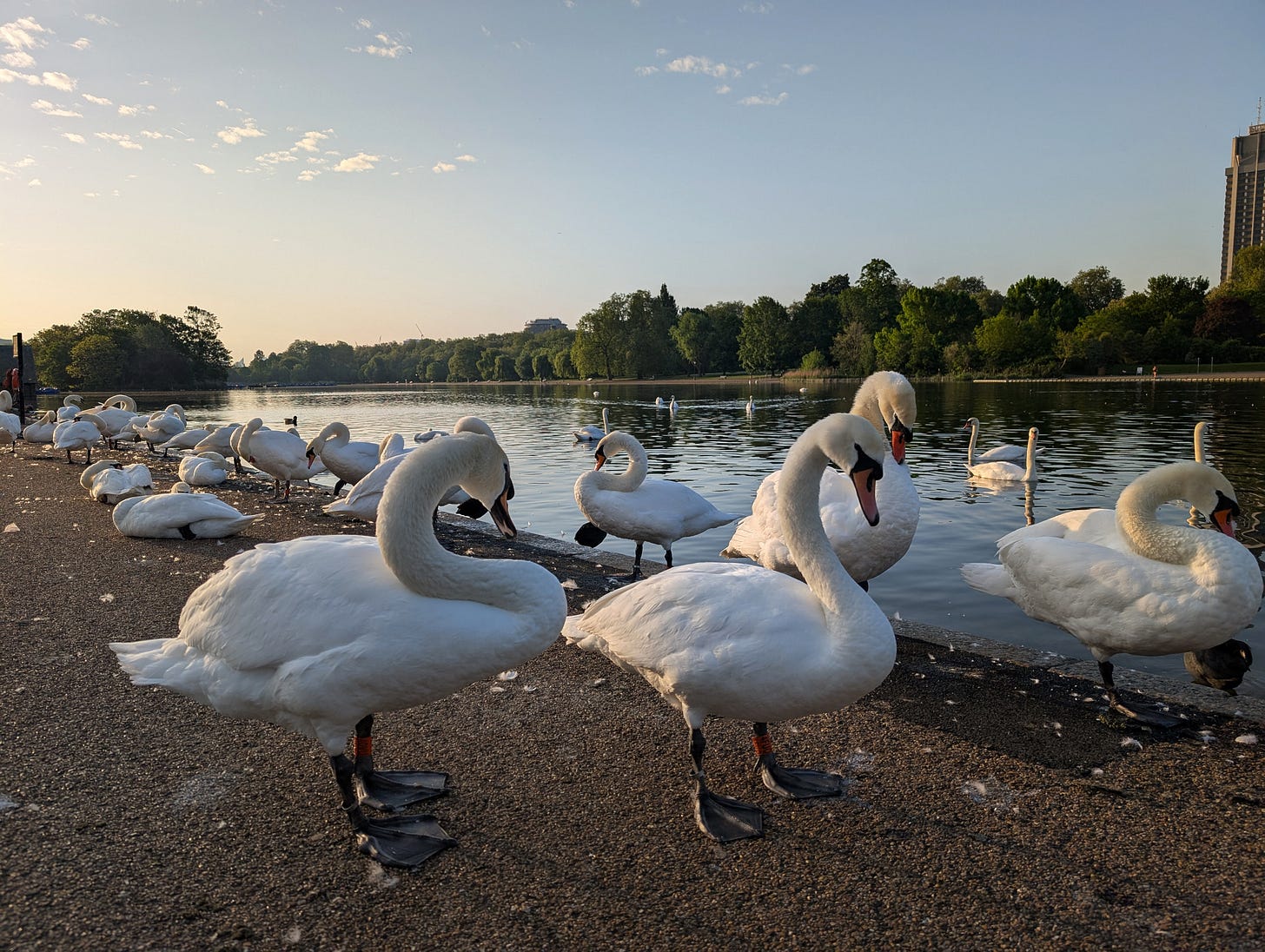
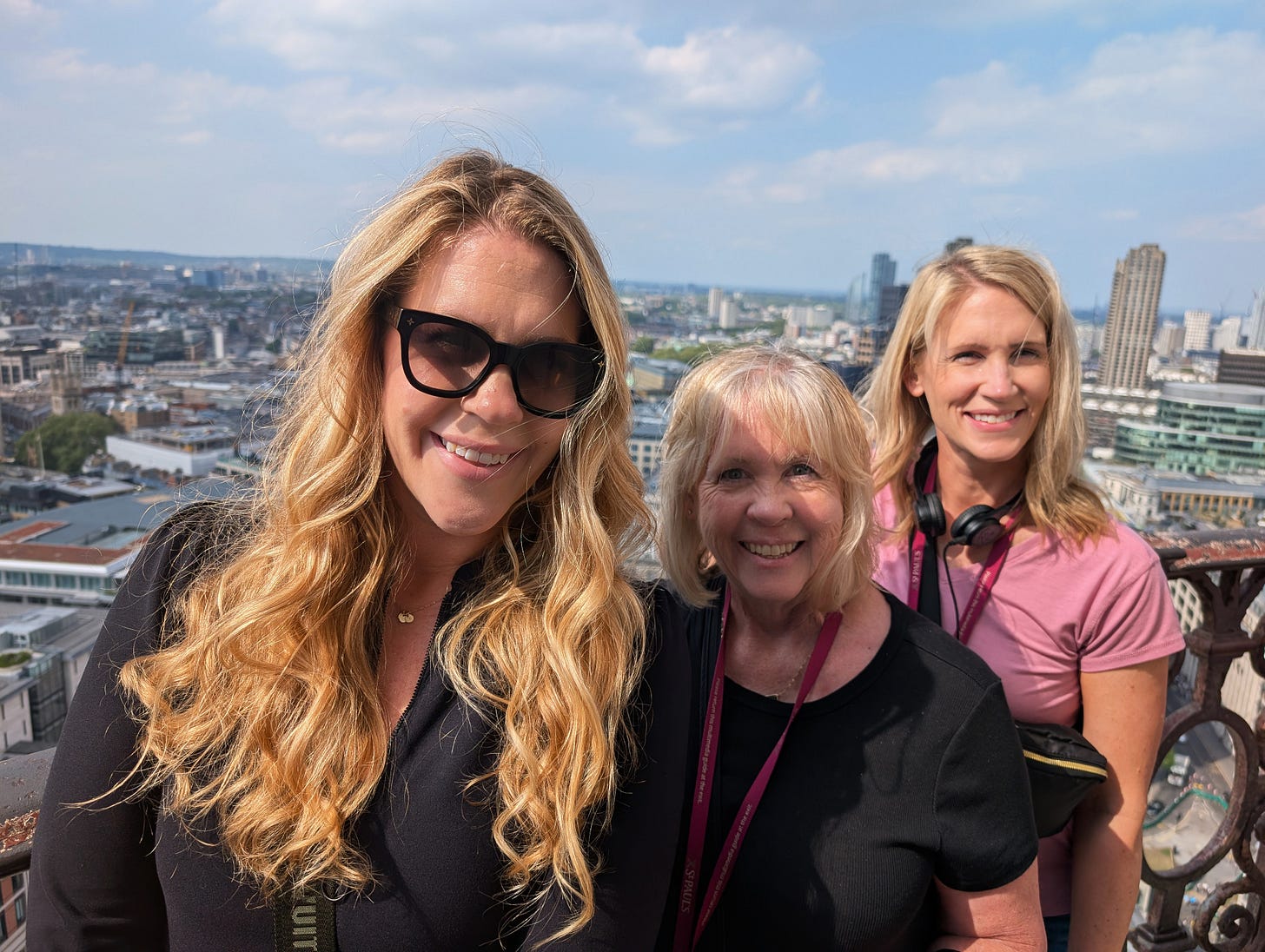
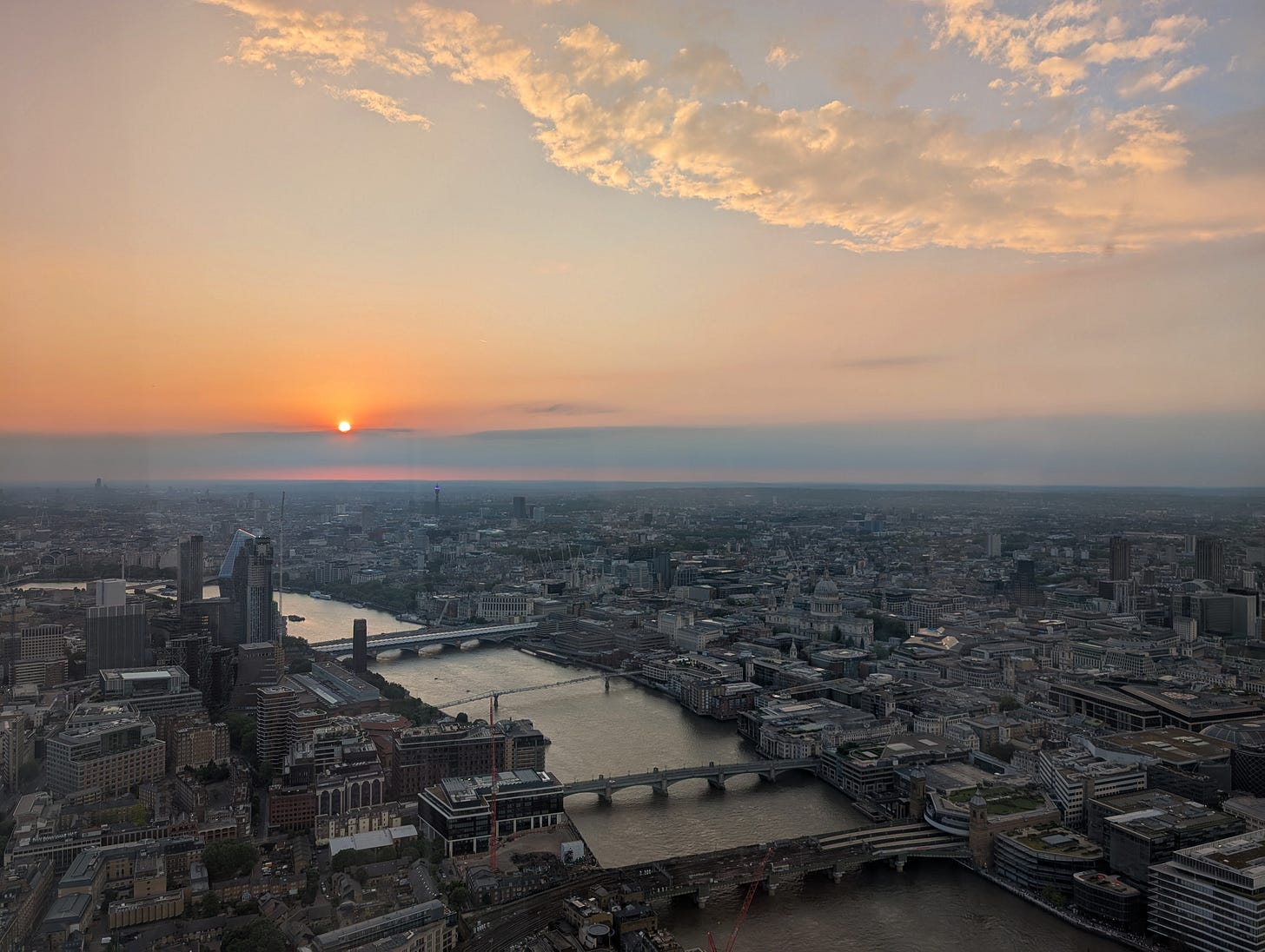
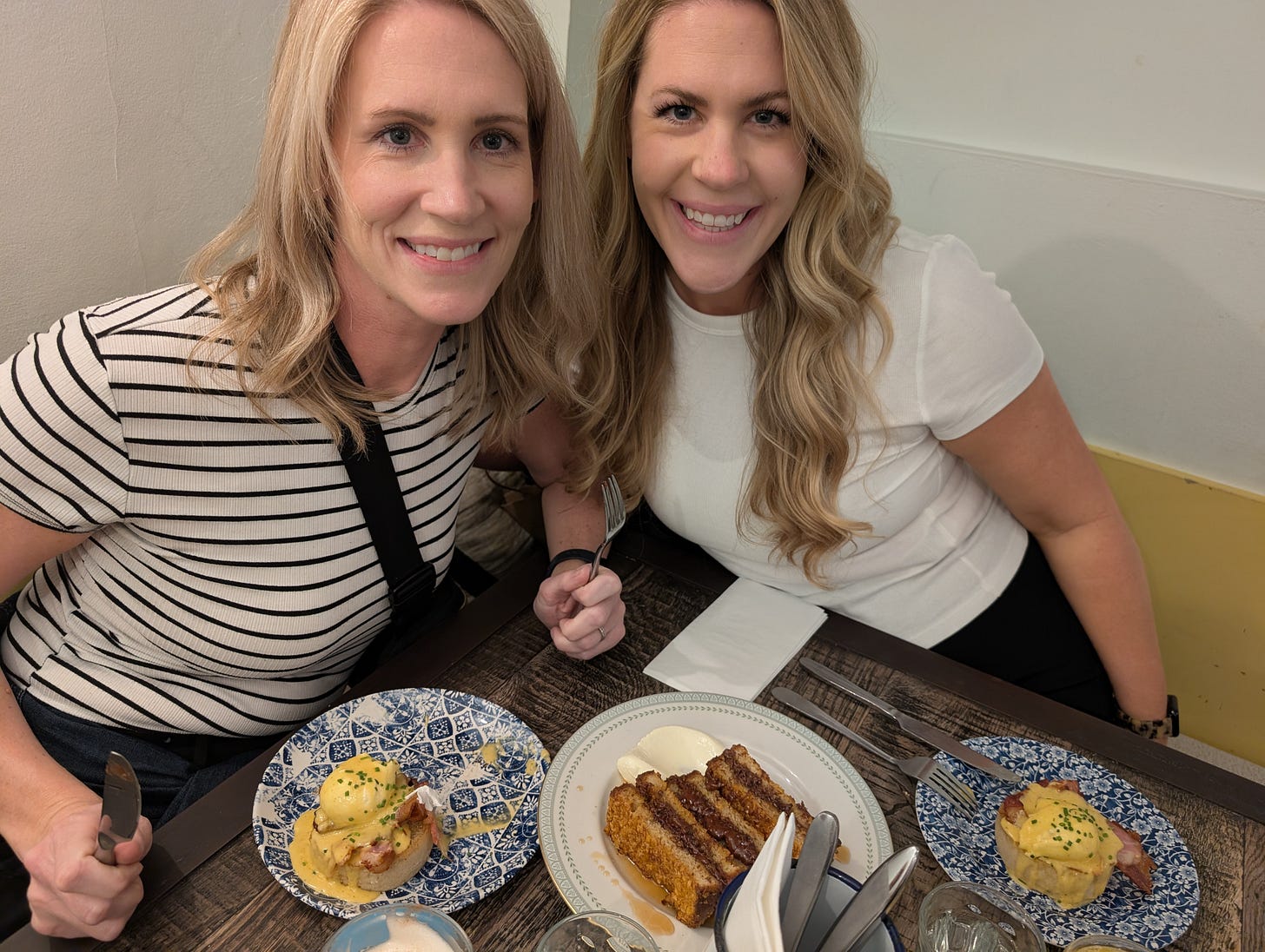
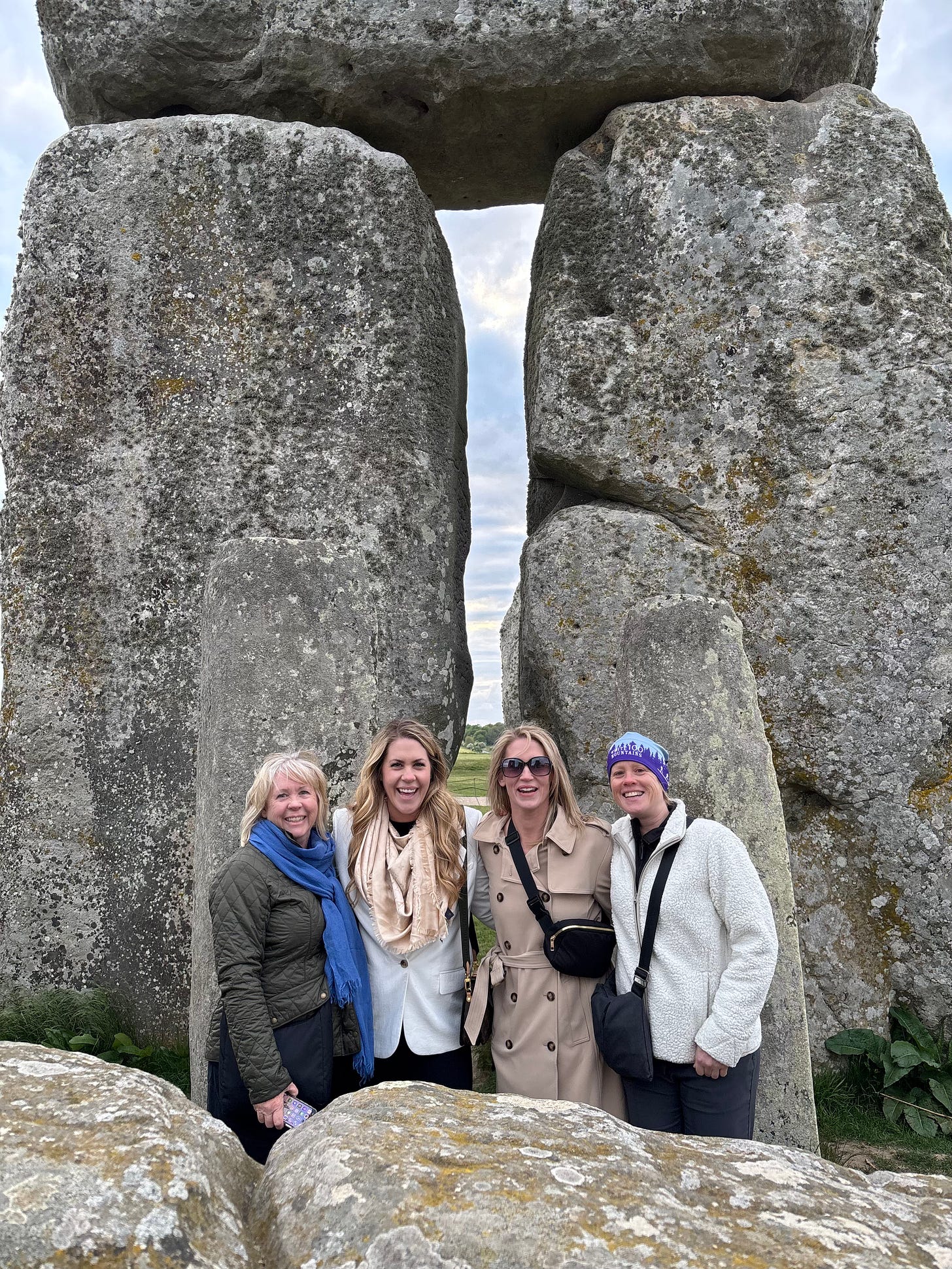
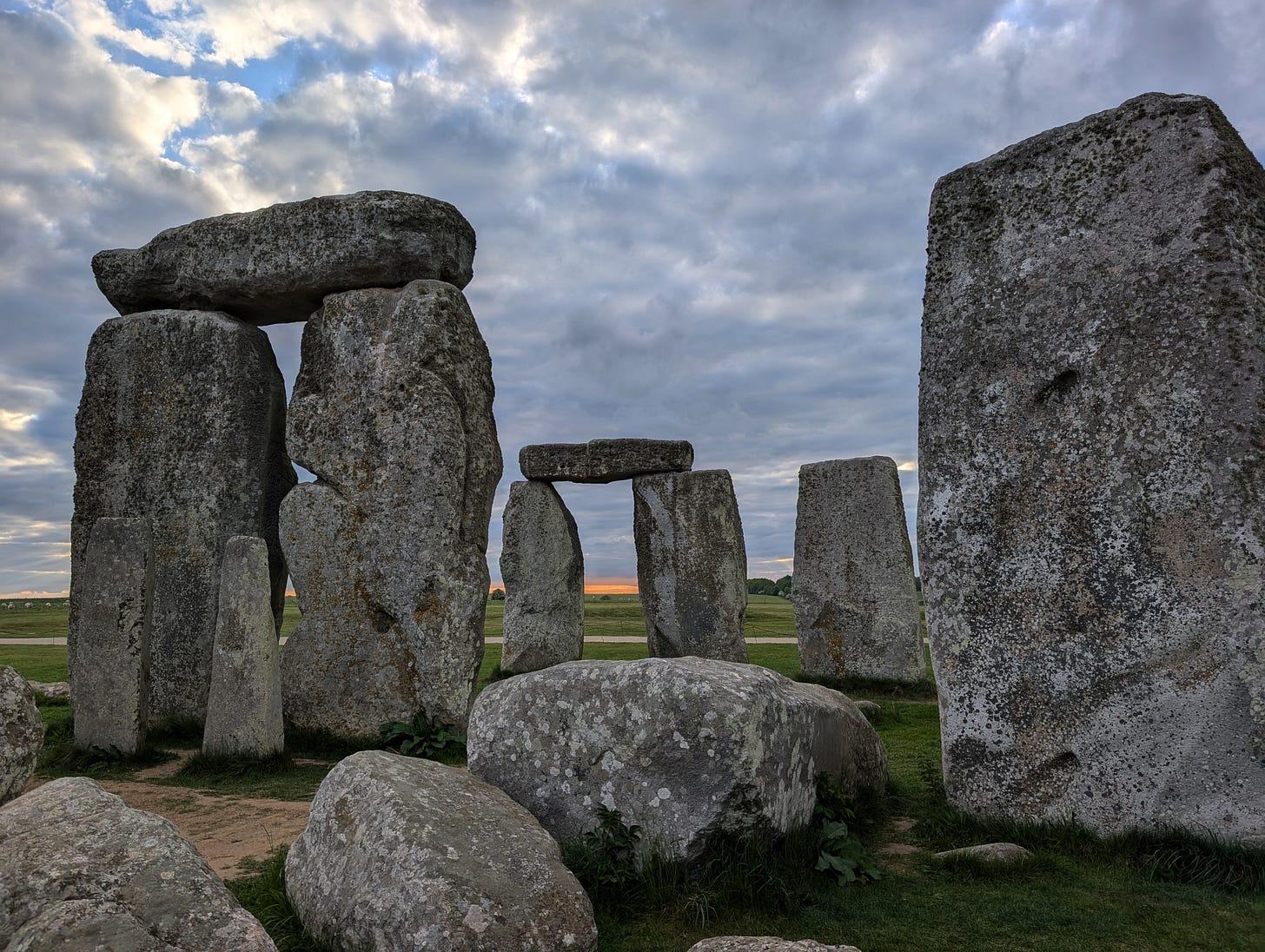
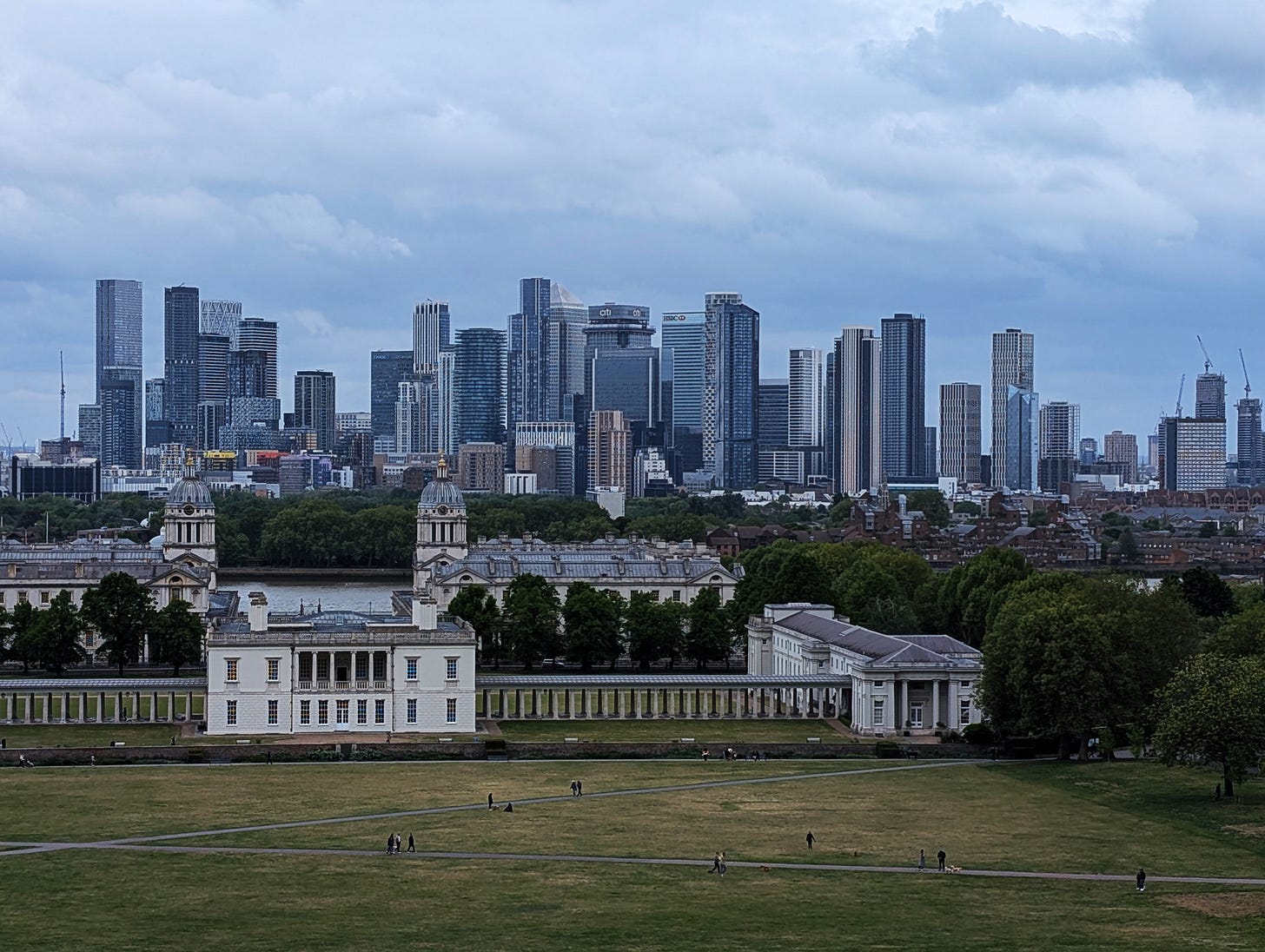
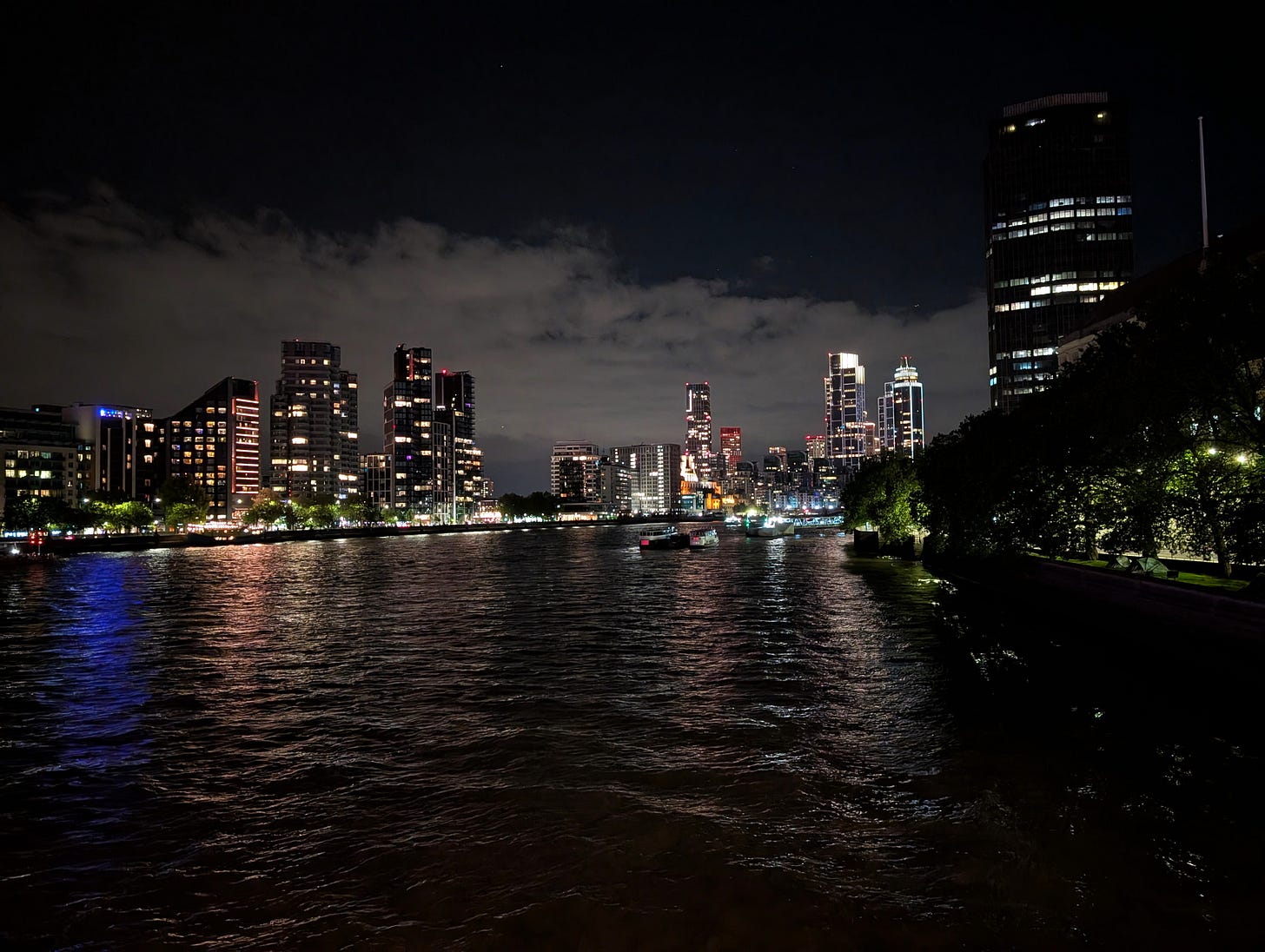

I've thought the same thing about cities! They'd be so much more pleasant if they didn't have so many people. And traffic. And cement and pavement. And buildings. Take away all those things and cities would be a lot better! Your trip sounds like it was an interesting time in Hell. I am not a city person!
And I liked the story about crossing the bridge and not knowing the name of the river. How embarrassing! But your sister's nonjudgmental response was quite nice. I guess it was the best of Thames and it was the worst of Thames.
I agree with Lucy. Regent's Park and Hampstead Heath for running, also Primrose Hill. Herself lived in Camden Town for ~40 years, 28 years of which we dated so I wandered around North and Central London quite a bit.